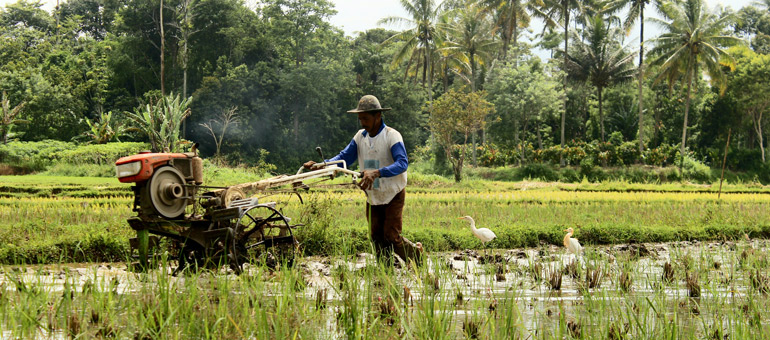In a blog a few days ago, I discussed a report released recently from Ceres2030, an initiative that aims to support governments to eliminate hunger while also improving diets, supporting livelihoods, and enhancing environmental sustainability by synthesising existing evidence on agricultural interventions and estimating the cost of achieving these interlinked goals by 2030. Here, I zoom in on two key results from that report that are particularly relevant for GAIN’s work.
First, the report and an accompanying scoping review in Nature Research make it clear that small- and medium-sized enterprises (SMEs) are essential for well-functioning food systems and for bringing farmers’ products to market - and improving their livelihoods along the way.
Recent transformations of food systems have tended to lengthen supply chains, creating new needs - and new opportunities - for providers of inputs and cold storage, warehousing, and transport services; for processors; and for wholesalers and retailers. Most of these needs are being met by local SMEs, not large multinationals. At GAIN, we have been working with food SMEs for many years and know that they provide essential services needed to bring food to consumers safely and in desirable forms.
But the Ceres2030 work makes it clear that they, as farmers’ most proximate interface with the wider market and food system, play an essential role in supporting smallholder farmer livelihoods, as well. They provide a set of complementary services (such as credit, training, and market information), often outside of formal contracts, thereby facilitating inclusive market access. These complementary services were found in the review to be not only appreciated by farmers but also correlated with farmers’ technology adoption and higher farm productivity.
However, the review also found that government agencies often fail to capitalise on the services provided by SMEs - such as by setting up competing public services rather than complementing existing private-sector ones. It points to several ways in which government efforts and funding could be more efficiently spent, such as by improving rural infrastructure for irrigation, processing, transport, and communications, which helps to facilitate private-sector service provision to farmers.

At GAIN, we have been working with food SMEs for many years and know that they provide essential services needed to bring food to consumers safely and in desirable forms. © Unsplash
Enacting appropriate and supportive regulations and marketing and trade policies can also help maximise benefits to farmers and increase productivity. Finally, as many SMEs in lower-income countries have low levels of managerial skills and technical capacity, and are under-financed and poorly coordinated, there is a key role for governments and civil society actors to play in supporting their skills and capacity, facilitating financing, and forging links along value chains. This is what we at GAIN are trying to do through our support to SMEs via a set of interconnected programmes and networks, including the Marketplace for Nutritious Foods, the Nutritious Foods Financing Facility, and the SUN Business Network.
Second, the researchers looked into evidence on effective interventions to reduce post-harvest loss of food crops in Africa and South Asia. They found several impactful interventions in storage, such as use of airtight containers and protectants, and handling practices for cereals and pulses; improved handling practices, better packaging, and cold storage were helpful for vegetables and fruits. Overall, however, evidence was skewed towards certain cereal crops and under-examined nutrient-dense, high-perishability crops like vegetables and fruit. Moreover, it focused closely on technologies, as opposed to interventions related to training, finance, policy, infrastructure, or market structure, on farmers, as opposed to other value-chain actors, and on storage, providing little evidence on other important steps like transport and processing. Based on this, the authors recommended "expanding the focus of interventions beyond the storage of cereals, to include more links in the value chain and more food crops."
This, again, aligns closely to GAIN’s work: the Post-harvest Loss Alliance for Nutrition has worked in three countries to expand efforts to prevent loss to include actors throughout the value chains for nutritious foods (such as tomatoes and fish) via interventions like training, forging links to financing options, and building networks.
The global community was already falling short on delivering on the SDGs, including those on hunger and nutrition, but the goalposts have been moved even further out of reach in recent months by the COVID-19 pandemic and associated economic fallout.
As we look forward to the 2021 Food Systems Summit and Nutrition for Growth Summit, we have a golden opportunity to make up that lost ground. To do so, it will be essential to leverage existing evidence to direct resources to their most efficient and sustainable uses – such as expanding efforts to reduce post-harvest loss and supporting SMEs.